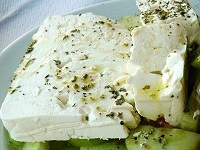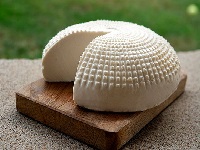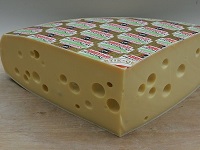Bardolino DOCG (Italy)
Bardolino is a light red wine from the province of Verona.
Bardolino is a town on the shores of Lake Garda.
Bardolino Flavors
Red berry flavors are typical for Bardolino, with hints of Marasca Cherry.
Strawberry |
Raspberry |
Currant |
Cherry |
Herbs |
Roses |
Spices |
Minerals |
Bardolino Profile
Bardolino has high acidity, good fruit aromas, and little tannins:
| SUGAR: | Dry (3 g/l) |
| BODY: | Light |
| TANNINS: | Light |
| FRUIT: | Medium Plus |
| ACIDITY: | Medium - High |
| ALCOHOL: | 12-13% ABV |
|
Serving Temerature: 14-15°C (57-59°F) | |
Bardolino Food Pairing
Bardolino is called an "all meal wine". It pairs well with many types of food. All pasta dishes can be combined with a Bardolino as long as the sauce is not too strong. Bardolino also fits well with pizza with tomato, cheese and meat.
Antipasti |
Ham |
Pizza |
Hamburger |
Pasta |
Chicken |
Pork |
Veal |
Excellent Pairings
Antipasti. Ham. Salumi.
Pasta. Risotto. Couscous.
Pizza. Hamburger. Soups.
Chicken. Pork. Veal.
Veneto Spesialities
Baccalà con Polenta.
The Ideal Glass for Bardolino
The Burgundy Glass is for swirling & releasing the wine aromas.

|
The shape of the glass captures and directs the delicate aromas to your nose
and leads the wine to the tip of your tongue for a better reception of the tastes.
The Burgundy glass was designed for the delicate and aromatic red wine Bourgogne Rouge, made from Pinot Noir grapes in Bougogne (Burgundy). |
Bardolino Cheese Pairing
Bardolino, with its fresh, and fruity profile, pairs well with a variety of cheeses, particularly those that are light, creamy, and fresh.
Consider young, light, and creamy cheeses like as soft goat cheese, Asiago, Brie, Port Salut, Feta, Mozzarella, Ricotta and lightly smoked cheeses such as Provolone.
The wine's acidity also complements richer dishes like pizza with cheese and meat.
If You Like Bardolino
You Will Also Like:
About Bardolino
The blend of grapes used to produce Bardolino includes Corvina, Rondinella, and Molinara.
These grapes are also used to produce Valpolicella, but the two wines are quite different.
Bardolino contains less Corvina and more Rondinella. Other blending grapes (max 15%) can be Rossignola, Barbera, Sangiovese, and Garganega.
Bardolino DOC(G)
Bardolino Superiore wines got the DOC status in 1968 and DOCG in 2001.
DOCG rules are: minimum alcohol level 12% and 1 year aging.
Region Veneto
The most famous white wines from the region are Soave and the sparkling Prosecco.
The most famous red wines are Amarone and Valpolicella from the Valpolicella Wine Region.
Black Grapes |
White Grapes |

11% Corvina |

27% Glera |

Veneto is home to some incredible DOCG wine regions:
- Amarone della Valpolicella DOCG
- Asolo Prosecco DOCG
- Bagnoli Friularo DOCG
- Bardolino Superiore DOCG
- Colli di Conegliano DOCG
- Colli Euganei Fior d’Arancio
- Conegliano-Valdobbiadene Prosecco DOCG
- Lison DOCG
- Montello Rosso DOCG
- Piave Malanotte DOCG
- Recioto della Valpolicella DOCG
- Recioto di Gambellara DOCG
- Recioto di Soave DOCG
- Soave Superiore DOCG
Soil |
Climate |

Calcareous. |

Mild Continental |













